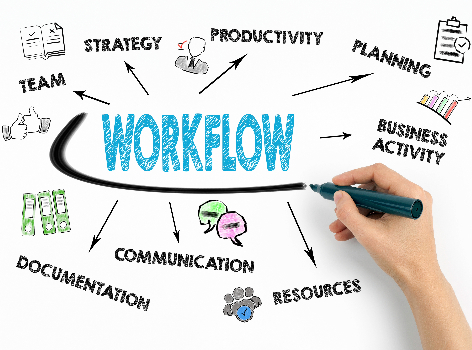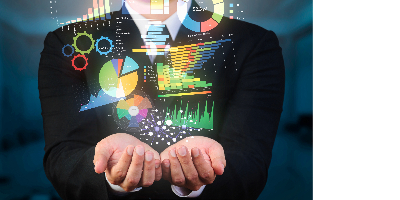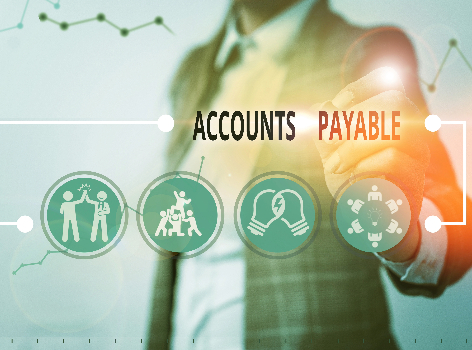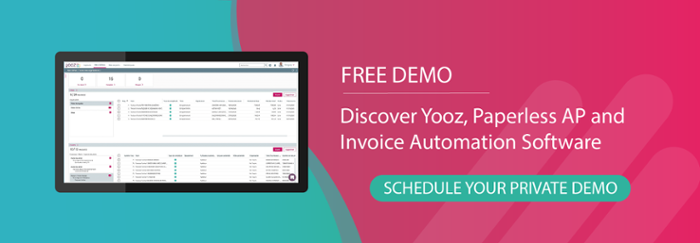In any modern business, efficient supplier and procurement management processes are vital for gaining and maintaining a competitive edge. This often begins with supplier dashboards or procurement dashboards; specialised software solutions designed to aggregate and visualise data related to the organization's procurement and supplier management functions.
A core part of accounts payable and accounts payable automation, these tools provide insights, transparency, and comprehensive control over the supply chain. They drive cost savings, highlight key supplier performance indicators, consolidate multiple data sources from different suppliers, monitor and ensure contract compliance. They also streamline procurement activities and enable data-driven decision-making.
The benefits of automated invoice processing further enhance these efficiencies by reducing manual workload, minimizing errors, and speeding up the entire invoice approval process.

Benefits of procurement dashboards
1. Real-time visibility:
One of the most significant advantages of a supplier dashboard is the real-time visibility of all your data and how you're tracking versus key performance indicators. It provides an up-to-the-minute view into supplier performance, inventory levels, order statuses, and more. This timely data empowers organisations to view these and other metrics in a user-friendly, big-picture way. This real-time data empowers organisations to respond swiftly to changes and other disruptions in the supply chain.
2. Data consolidation:
Supplier dashboards allow organisations to consolidate data from diverse sources across various sources and business units, including ERP systems, supplier databases, inventory management systems, and procurement departments. This consolidation simplifies the identification and analysis of opportunities and early detection of issues for procurement professionals.

3. Streamlined procurement processes:
These dashboards seamlessly integrate with supply chain tools, enhancing workflows and automating specific processes. They provide a comprehensive view, making it easy to see progress, identify top performing suppliers and strengthen relationships while addressing underperforming ones.
4. Improved supplier relationship management:
Suppliers love it when organisations make their jobs easier, and supplier dashboards can do just that. Supplier dashboards streamline communication by plugging into supplier portals and their ERP systems to get an end-to-end view of what's happening and where. This comprehensive view enables organisations to evaluate supplier performance and measure it against established key performance indicators and service level agreements, fostering collaboration to rectify issues.
For example, are suppliers missing delivery deadlines? How do they cost versus another supplier? Is the organisation itself providing all the information the buyer or supplier needs to purchase the right goods? Whatever the question, this information is tracked against the key performance indicators and service level agreements that were agreed upon at the offset. From the dashboards, procurement professionals can look at their own data to see where things are going wrong and work in unison with suppliers to rectify issues.
5. Cost control:
Most companies and organisations want to reduce the cost of procurement at every juncture. Thanks to supplier dashboards, they can readily optimise processes, reduce costs, save, and negotiate more favorable terms with suppliers.
For example, how often do teams order equipment outside of company policy (i.e. using suppliers that cost more than the recommended), or how often do in-policy suppliers miss delivery deadlines, leading to missed opportunities and increased costs? With dashboards, organisations can make informed, real-time decisions.
6. Strategic decision-making:
By providing readily accessible facts and figures, supplier dashboards empower organisations to make informed, strategic decisions regarding inventory, supplier selection, and procurement strategies.
Thanks to the ability to look at the bigger picture, organisations no longer need to guess about supplier performance as all the right data points are surfaced for you! They can even set up routine reports so they can track how key performance indicators are trending.
Features to look for in a supplier dashboard
With all the benefits outlined above, it makes sense for organisations to invest in a supplier dashboard. However, it's also important to consider what various features and capabilities are required to ensure they achieve maximum value. Integrating an AP automation platform into the dashboard can further enhance efficiency, providing real-time insights and streamlined processes that allow businesses to fully capitalize on their investment.
There are plenty of suppliers and services out there who offer powerful reporting tools and end-to-end suites for procurement and accounts payable, but here are a few of the key things to look out for:
1. Customisability
Organisations need tailored dashboards that meet their specific needs and preferences. Dashboards should be easily tailored to address these needs, allowing users to choose which key status indicators to display, set up alerts, and customise the interface.
2. Data visualisation
Visual representations of data, such as charts and graphs, facilitate the comprehension of complex information.

This is particularly relevant and useful when finance teams have to report back to the CFO and C-Suite on various performance metrics.
3. Scorecards
These tools enable the rating and comparison of suppliers based on performance metrics, aiding in supplier selection and ongoing evaluation.Now, when it comes to contract renewal, organisations will have access to the information needed to make the right choice.
4. Forecasting and predictive analytics
Advanced dashboards integrate predictive analytics to help organisations anticipate future industry trends and issues. In particular, these tools aid with inventory management and procurement planning by tracking how supplier stock is performing, as well as seasonal upticks (or decreases) in supplier stock availability.
5. Integration and collaboration
Seamless integration with other systems, such as Enterprise Resource Planning (ERP) software, inventory management systems, and procurement platforms and portals, provides a unified view of operation that facilitate scalability.

Explore Yooz
A vital component of any supplier dashboard system or ERP is Accounts Payable (AP) automation, covering everything from invoice capture and approval to compliance and forecasting. Especially if you choose Yooz.
Yooz offers a powerful cloud-based Purchase-to-Pay (P2P) automation solution that combines Artificial Intelligence (AI) and RPA technologies for unparalleled automation quality, simplicity, and customisation. With over 250 native connectors, Yooz seamlessly integrates with information systems and ERPs, setting it apart from other solutions on the market.
Discover more about Yooz and revolutionise your procurement process today!









